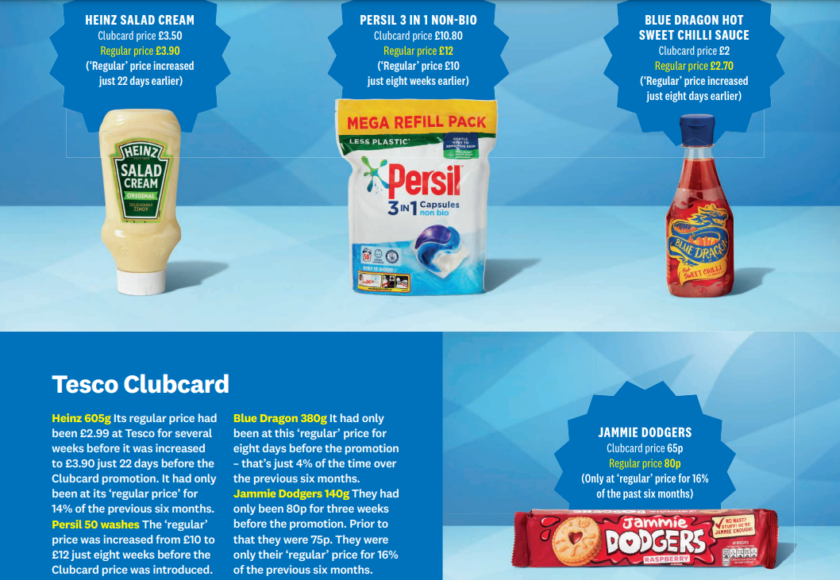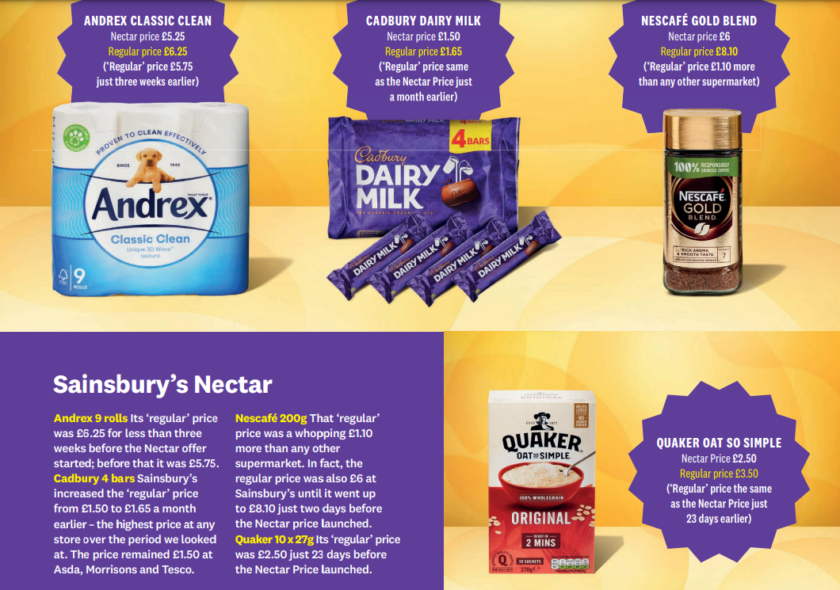Consumer watchdog investigation raises concerns over supermarket loyalty pricing

Leading supermarkets Tesco and Sainsbury’s loyalty schemes have come under investigation by consumer champion, Which?
The probe suggests that the stores may be employing potentially misleading tactics on loyalty offers, giving shoppers the illusion of more significant savings than they are actually receiving.
Which? has since presented its findings to the Competition and Markets Authority (CMA), raising concerns that supermarkets may inflate their ‘regular’ prices.
This practice would give loyalty scheme customers the impression that they’re receiving a more substantial discount than they actually are.
To delve deeper, Which? studied 141 Clubcard and Nectar card prices at Tesco and Sainsbury’s, tracking their pricing history over the past six months.

Remarkably, about 29% of the member-only promotions were at their so-called ‘regular’ price for less than half of this period.
One striking example highlighted by Which? revealed that Sainsbury’s had promoted a jar of Nescafé Gold Blend Instant Coffee (200g) for £6 with a Nectar card.
This price seemed to be a saving of £2.10 on the ‘regular’ price of £8.10.
However, just two days before launching the Nectar price, this ‘regular’ price was set at £6.
It’s worth noting that the same product’s pricing at other supermarkets like Asda, Morrisons, Ocado, Waitrose, Tesco, and Lidl varied, often showing a lower regular price.
Similarly, Tesco’s loyalty pricing practices were put in the spotlight when Which? noted a price fluctuation concerning Heinz Salad Cream.
The product had a Clubcard price of £3.50 and a ‘regular’ price of £3.90, even though its regular price was previously set at £2.99.
In addition to pricing discrepancies, Which? also emphasised that not all customers could avail of the loyalty schemes.
Restrictions based on age, address, and digital requirements may exclude certain demographics, particularly vulnerable groups.
This move prevents them from accessing discounts that would previously have been universally available.

Sue Davies, Which? Head of Food Policy, commented, “It’s not surprising that shoppers are questioning whether supermarket loyalty card prices are really a good deal.”
She emphasised the importance of ensuring transparency in loyalty card prices and called for the regulator to closely examine this growing trend of dual pricing.
She said: “As member-only pricing continues to grow, the sector, its pricing practices and who is eligible for membership needs to be properly scrutinised so that all shoppers – including society’s most vulnerable – can benefit and no one is misled into buying things they wouldn’t have usually bought or which isn’t quite the deal they believe it to be.”
“Which? is calling on supermarkets to make sure that their loyalty card prices don’t mislead and for the regulator to look more closely at this growing trend towards dual pricing. There is also the important issue of whether it is right for certain groups to be excluded from member-only schemes.”
Responding to these revelations, Sainsbury’s mentioned that many products had seen a price increase in the past six months due to inflation.
The supermarket chain also highlighted its efforts in ensuring transparency regarding customer data usage through the Nectar scheme.
On the other hand, Tesco maintained that its Clubcard Price promotions abided by strict rules and consistently offered genuine value and savings to its customers.
[Photo: Which?]
Spotted something? Got a story? Email: [email protected]
Latest News
